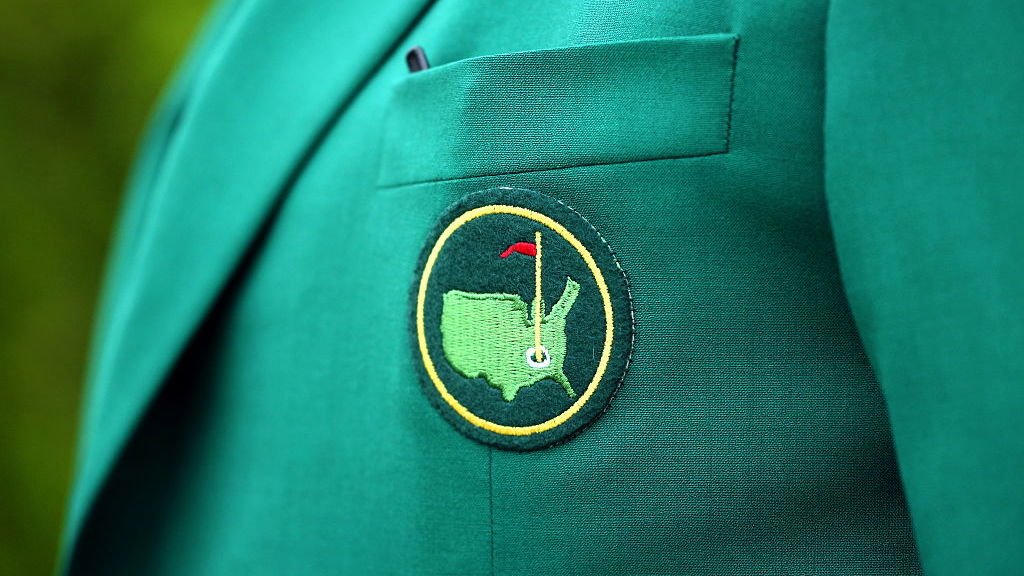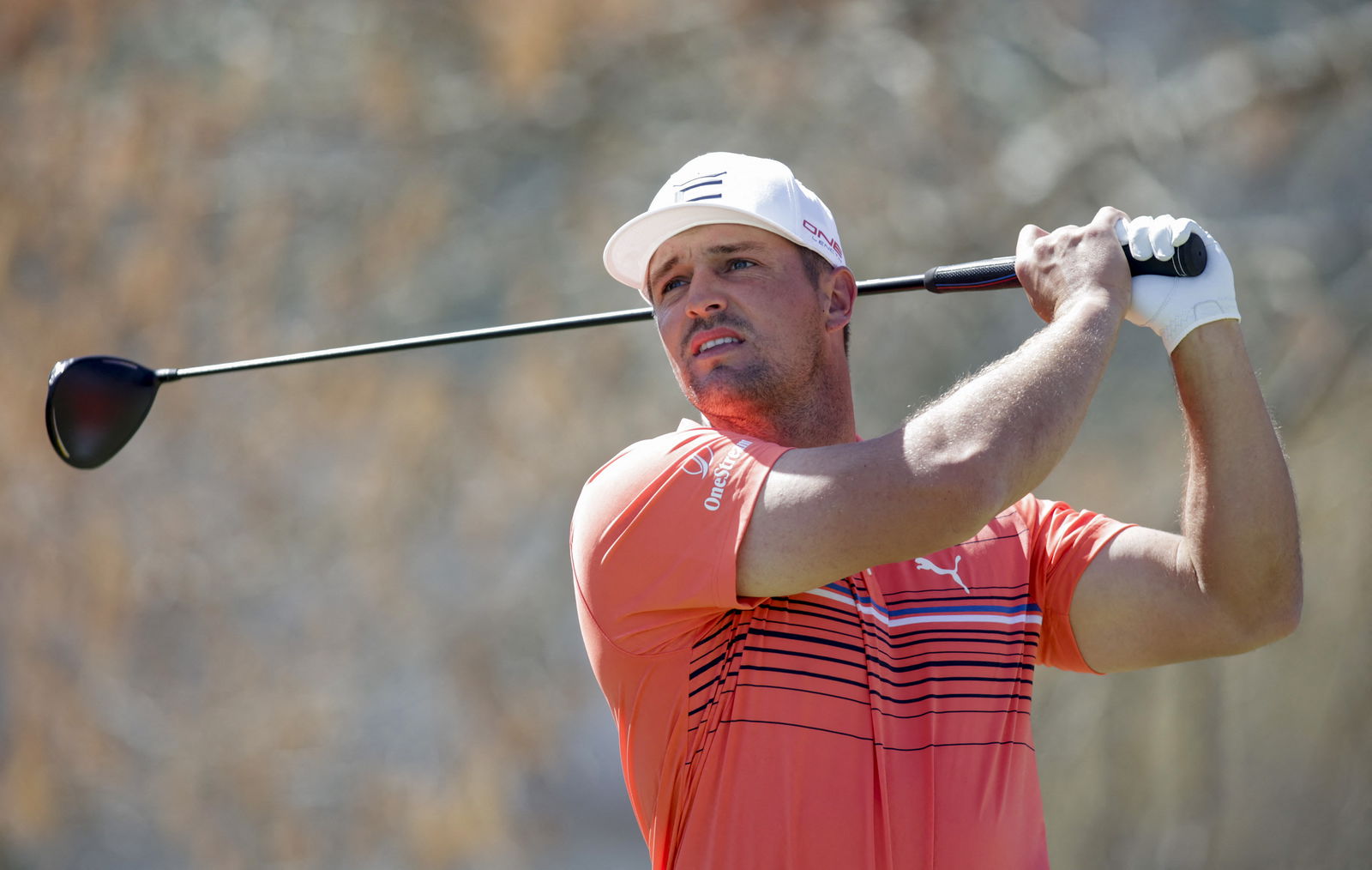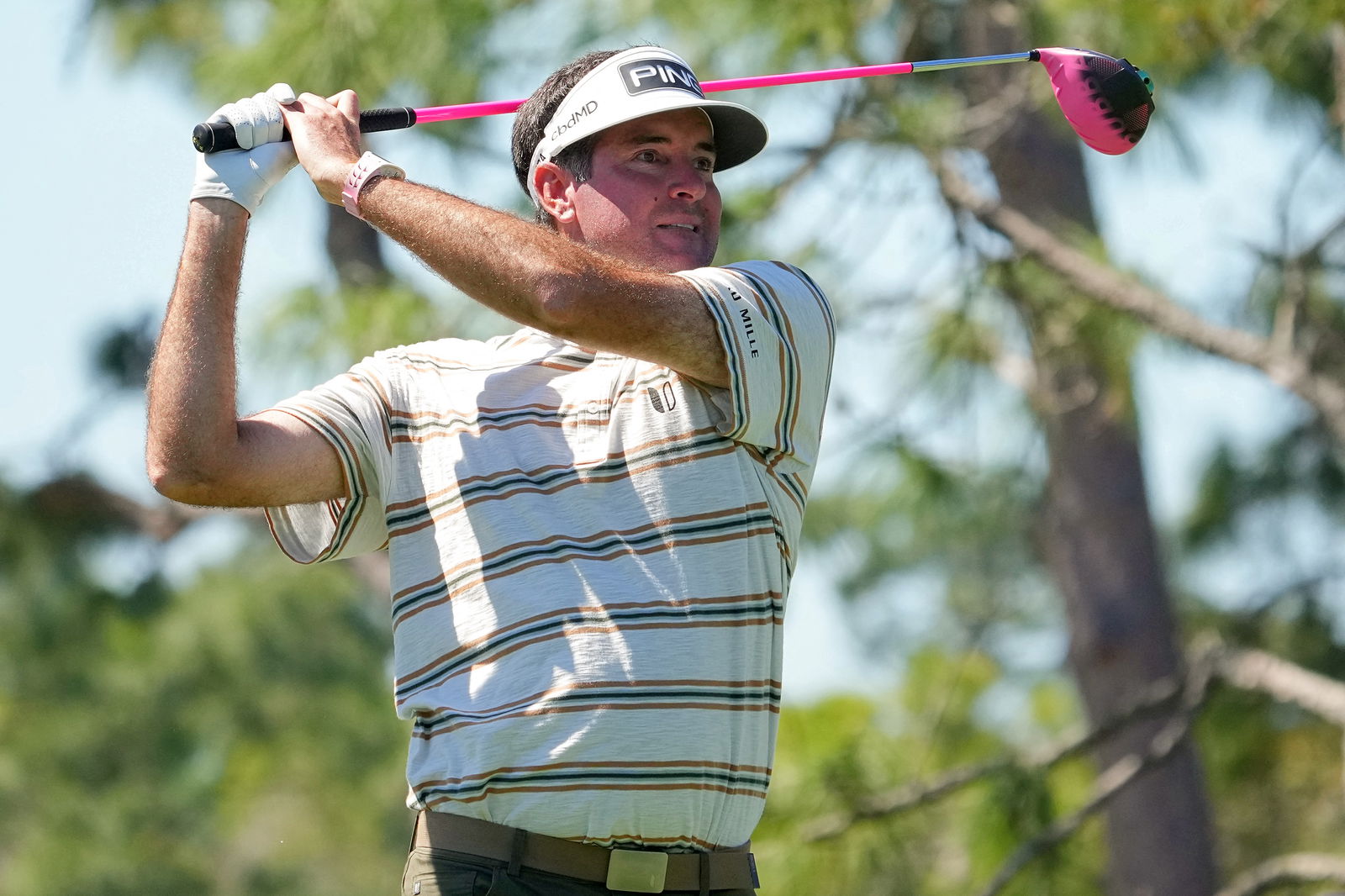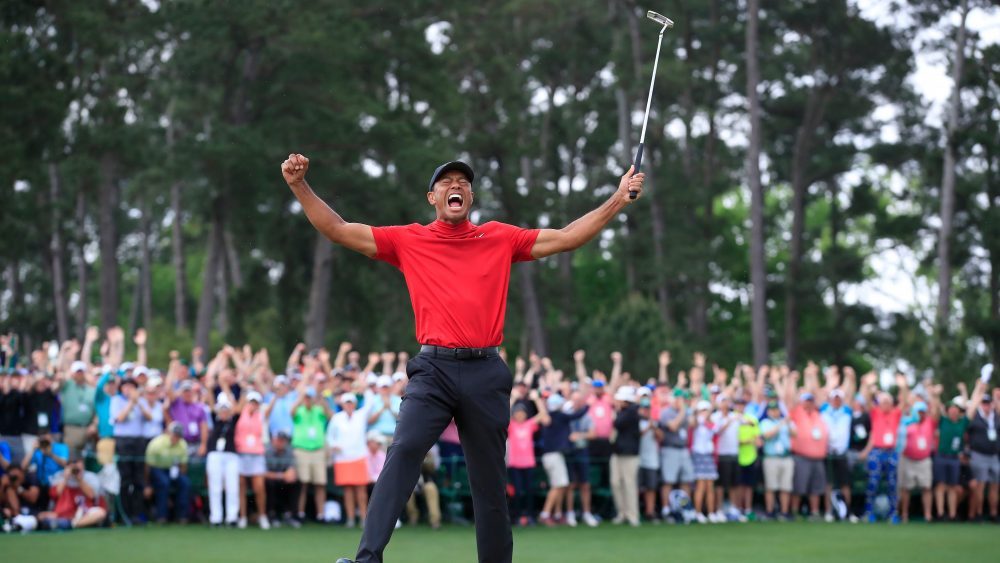The Masters: Scrutinising Augusta's traits for success
Exploding the myths of The Masters to help you find the winner.

With Augusta staging The Masters every year, many of us like to think we know a thing or two about what is required to win a Green Jacket.
From pummeling drives and holing the most putts to drawing the ball and acquiring experience, we take a closer look at some of the "common traits" to play well at Augusta and see just how true they really are.
You might be quite surprised.
Check this out...

#1 - YOU NEED TO HIT IT LONG?!
While it's not a guarantee for a Green Jacket, the added distance on this hallowed Georgia turf will certainly help in a player's bid to win The Masters this weekend.
Dubbed by critics as "Tiger-proofing" and to combat the latest driver and golf ball technology, Augusta National has steadily been lengthened from 6,985 yards to 7,510 since 2001.
The latest 7,510-yard setup for the 2022 Masters is only 35 yards longer than the course measured in 2021.
While we have seen shorter hitters buck the trend and win The Masters in the last 19 years such as Mike Weir (2003) and Zach Johnson (2007), the majority of champions are more often than not big hitters.
Looking at the driving stats back in 2016, winner Danny Willett ranked tied 32nd with an average drive of 278.12 yards. Dustin Johnson, as expected, led the distance stat that week on 299.3 yards en route to finishing tied fourth.
In 2017, Sergio Garcia ranked sixth in driving distance en route to his maiden major title, but 2018 champion Patrick Reed relied more on accuracy than distance as he ranked just inside the top 50 when it came to driving distance.
Last year's winner Hideki Matsuyama averaged 288 yards from the tee at Augusta National, which was a similar position to Reed in 2018.
There is little rough at Augusta and the ice storm of February 2014 thinned out a lot of trees, meaning wayward drives are not overly punished.
"I think guys like Dustin [Johnson], JB Holmes, Bubba Watson and Rory McIlroy, the usual suspects who really hit the ball long and far, have a distinct advantage coming into these greens," three-time Masters champion Phil Mickelson once said ahead of The Masters.
"I'm going to be swinging as hard as I can. I won't be able to keep up with them, but hopefully I'll be able to keep it in the same zip code and have short irons into greens."
Mickelson is of course not playing this week after taking time out of the sport as a result of his controversial remarks made to golf biographer Alan Shipnuck.
Sandy Lyle once warned it is not all about bombing the ball. "It's a patience game, and it's about getting the ball in the hole."
Verdict: Yes, big advantage for the bombers

#2 - YOU NEED TO DRAW THE BALL?!
On paper, a draw for a right hander and a fade for a left hander would seem to come in handy.
Eleven of the 18 holes at Augusta require a right-to-left shot shape off the tee, most notably at the par-four 10th and par-five 13th.
A draw travels further than a fade, but the fade lands more softly so if you're long enough it's a potent weapon.
Garcia, who won here in 2017, is a natural drawer of the golf ball and he said that definitely worked in his favour en route to his maiden major title.
"My preferred shot shape is a draw, which came in very handy elsewhere during the Masters, especially on the par 5s, where I was 7-under for the week," said Garcia.
Reed, the 2018 winner, is also a confident drawer of the ball, but he worked hard on being able to hit a fade during that season with coach Kevin Kirk.
Tiger Woods, who clinched his 15th career major title at the 2019 Masters, also favours a slight draw from the tee.

Two-time Masters champion Bubba Watson hits his left-handed fade as well as anybody.
Add to that a deceptively vicious iron game and a creativity that nobody else can match, and you've got a perfect combination for a Masters champion.
"There are holes that hitting a cut makes it a lot easier," said fellow left-hander Mickelson.
"I think holes like 12, which is a very difficult par three, sits perfectly along a left-handed shot dispersion, short-left, long-right, so you aim at the middle of the green and you have a huge green to hit at.
"There's holes like that that sit better for left-handed players."
Bucking the trend of draw winners, record 18-time major winner Jack Nicklaus preferred a fade and won six Green Jackets, as too 2016 winner Willett.
Even Sir Nick Faldo won three Masters titles with a natural cut.
In short, being able to hit the ball both ways certainly gives you a major chance of victory this week.
Verdict: A draw certainly helps, but a fade won't hurt you either

#3 - YOU NEED TO OWN THE PAR-5s?!
The par-5s at Augusta (2, 8, 13 and 15) are the four easiest holes on the course and making the most of their scoring potential is often spoken about as one of the keys to winning The Masters.
Last year, Matsuyama made three eagles on the par-5 holes at Augusta en route to playing them all in 11-under par for the week. Given he finished the week on 10-under par, it is evident that the par-5s were crucial in him going on to become Japan's first-ever male major champion.
In 2019, Woods played them in 8-under par en route to victory, while in 2018, Reed demolished them with eight birdies, six pars and two eagles to give him a strokes-gained edge of 7.95 strokes on the par-5s alone.
In 2017, Garcia played them in 7-under par and finished tied with Justin Rose on 9-under par after 72 holes, before going on to win the playoff.
The par-5s did not do much for 2016 winner Willett though, who played them in just level par during his 5-under winning total. The Englishman parred the second every day, played the eighth in 1-under with a birdie on Sunday, played the 13th in level par with a bogey on Saturday and birdie on Sunday, and played the 15th in 1-over with a bogey on Saturday.
.JPG?width=1600)
When Bubba Watson won his second Green Jacket in 2014, he was 8-under par for the week on the par fives with six birdies and an eagle.
Rory McIlroy, on the other hand, only played the par fives in level par for the week with five birdies and five bogeys and finished tied eighth, eight shots behind Watson.
"I can be a little over-aggressive," said McIlroy. "I had a 9-iron in my hand on 13, and I think I had a nine-iron in my hand on 15, and I walked away with two sixes. You turn those into two fours and all of a sudden I finish third.
"That's been something I've been thinking about, getting the eagle a little bit too much, and trying to get two shots up on the field instead of settling for one and still realising that's still a good result."
Par-5s are typically the best scoring holes at any golf course on the PGA Tour, but when it comes to The Masters that really is the case.
Play them better than anyone else and there is a very good chance you could be slipping on that Green Jacket in the Butler Cabin.
Verdict: Definitely play the par-5s well
.JPG?width=1600)
#4 - YOU NEED TO BE THE GREATEST PUTTER?!
Of course it always helps to be on form with the flatstick at any golf tournament, but in particular around Augusta National with its lightning fast greens where three-putts can happen at an instant if you are not careful.
Last year's winner Matsuyama ranked above average with the putter at The Masters (1.58) sitting just outside the top 10 for putts per hole.
Surprisingly, Tony Finau led the putts per hole statistic at the 2021 Masters on 1.49 alongside Ian Poulter and Patrick Reed.
Finau finished tied 10th, Poulter tied 26th and Reed tied eighth last year, so all three performed fairly well as a result of a solid putting week.
Reed also topped the field for putts per hole when he won here in 2018 with a very solid average of 1.44.
When Garcia won in 2017, the Spaniard was only 26th in putts per hole (1.65). Rickie Fowler (tied 11th for the tournament) and Jimmy Walker (tied 18th for the tournament) led the way 12 months ago in the putting charts (1.51).
Looking back at 2014, winner Bubba Watson (1.61) ranked in the top third for the average number of putts-per-hole statistic and his form on the greens fluctuated from round to round. He made 1.78 putts per hole on Thursday, 1.44 on Friday, 1.83 on Saturday and 1.49 on the Sunday. When Watson won his first Masters in 2012, he fared even worse on the greens with an average of 1.67 putts per hole.
Fowler, who finished in a tie for fifth in 2014, led the putting statistic once again that week with 1.5 putts per hole, and he was consistently solid over all four days with 1.44 his best and 1.56 his worst.
"There's some times when you get to be aggressive, where you get maybe a 10-footer up the hill, but there's a lot of occasions where you're playing defense and just trying to not three-putt or not make a mistake," said Fowler. "It can happen quickly on these greens."
In 2012, Lee Westwood proved you could still putt poorly and contend as he finished just two shots shy of the playoff between Watson and Louis Oosthuizen, despite taking a below-average 128 putts for the week - equating to 32 putts per round.
Verdict: You do not need to be the best putter to win The Masters, but do not let the flatstick get too cold.

#5 - YOU NEED EXPERIENCE OF AUGUSTA?!
Fuzzy Zoeller may disagree but it seems like experience is vital at Augusta National.
Zoeller, of course, is STILL the only man to have won on his debut (barring the first two tournaments won by Horton Smith and Gene Sarazen) when he beat Tom Watson in a playoff in 1979.
However, that is not to say the debutants are there to make up the numbers.
While not a debutant, Willett won at just his second attempt in 2016 having tied for 38th the year before.
On the whole though, experience pays here.
Matsuyama was playing in his 10th Masters since his first appearance as the low amateur in 2011 when he won The Masters last year. The Japanese star had already notched five top-20 finishes at Augusta prior to his victory, and he has only missed one cut in 10 appearances.
Woods won the first of his five Masters titles in just his third start in 1997. In total, Woods has played in The Masters 23 times.
Reed won in just his fifth Masters start, and his best finish prior to his win last year was a tied for 22nd in 2015. Garcia won in his 19th Masters start in 2017.
Jordan Spieth and Jason Day both came second on their debuts in 2014 and 2011 respectively, while Luke Donald took third in 2005 and Paul Casey finished sixth in 2004.
The average number of Masters appearances before a first win is seven.
"When I won, I had been feeling more and more comfortable here," said Adam Scott when he won in his 12th Masters start in 2013.
"Then it was a matter of making the putts at the right time throughout the week or on the final hole. It doesn't surprise me that quite a few guys have gone on to win multiple green jackets."
Charl Schwartzel was only playing in his second Masters when he won in 2011, but like many before him he had consulted various past champions, notably Jack Nicklaus, to help learn the secrets of Augusta.
World No.1 Scottie Scheffler is making just his third start in The Masters this week, but his game is on a completely new level right now to where it was in both 2020 and 2021, and we would not be suprised in the slightest if the red-hot American lands his maiden major around here.
Verdict: Experience is vital around Augusta National. The new Masters champion will likely have played here at least a few times.
Andy's Masters Pick: Justin Thomas - 14/1 - has a natural ability to work the ball both ways so he is a perfect fit around here, he hits a long ball from the tee and so can take advantage of the par-5s and he has played in The Masters six times now with a best result of tied fourth in 2020. No player has found more greens in regulation at The Masters in the last four years than JT. Huge chance.


